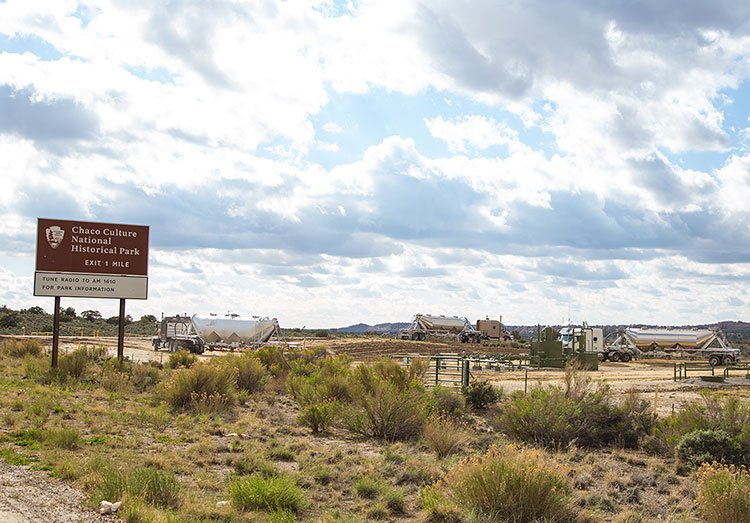Jonathan Thompson – High Country News
The sky is the way the sky gets sometimes around here, that high-cloud, flat grey. I’m on a promontory in the ash-colored badlands of Kutz Canyon in northwestern New Mexico with my brother, Geoff. We look at our compasses and then scan the horizon toward true north and true south, looking for clues. Nothing. Instead, I see gas wells scattered here and there, a white truck driving a road down below. Then my eye alights upon a set of tracks leading into the bleached-white sprawling bed of Kutz Wash. They end at the carcass of a horse, a reminder of how harsh this landscape can be.
We stand among what’s left of the 17 rooms and two kivas of Twin Angels Pueblo, built around 1100 A.D. and probably occupied for a century, maybe more. A few walls were exposed during the one formal, partial excavation here, undertaken 100 years ago, and one glance at the thick-walled, distinctive masonry confirms this “Great House’s” connection to Chaco Canyon and the iconic Pueblo Bonito, Casa Encantada and other massive structures some 35 miles to the south.
By now you’ve probably heard that fracking is encroaching on and threatens Chaco Canyon. That’s only partially true: Chaco Canyon, Pueblo Bonito and its sibling structures are all part of the Chaco Culture National Historical Park, and thus protected from oil and gas and other development (though drilling-related light and noise pollution are a legitimate and significant concern). But it is now widely known that Chaco Canyon, itself, was merely the center of a larger society that extended hundreds of miles beyond the canyon’s walls, to dozens of related structures such as Twin Angels…
Read the full article on High Country News – Photograph source: Friends of Chaco

